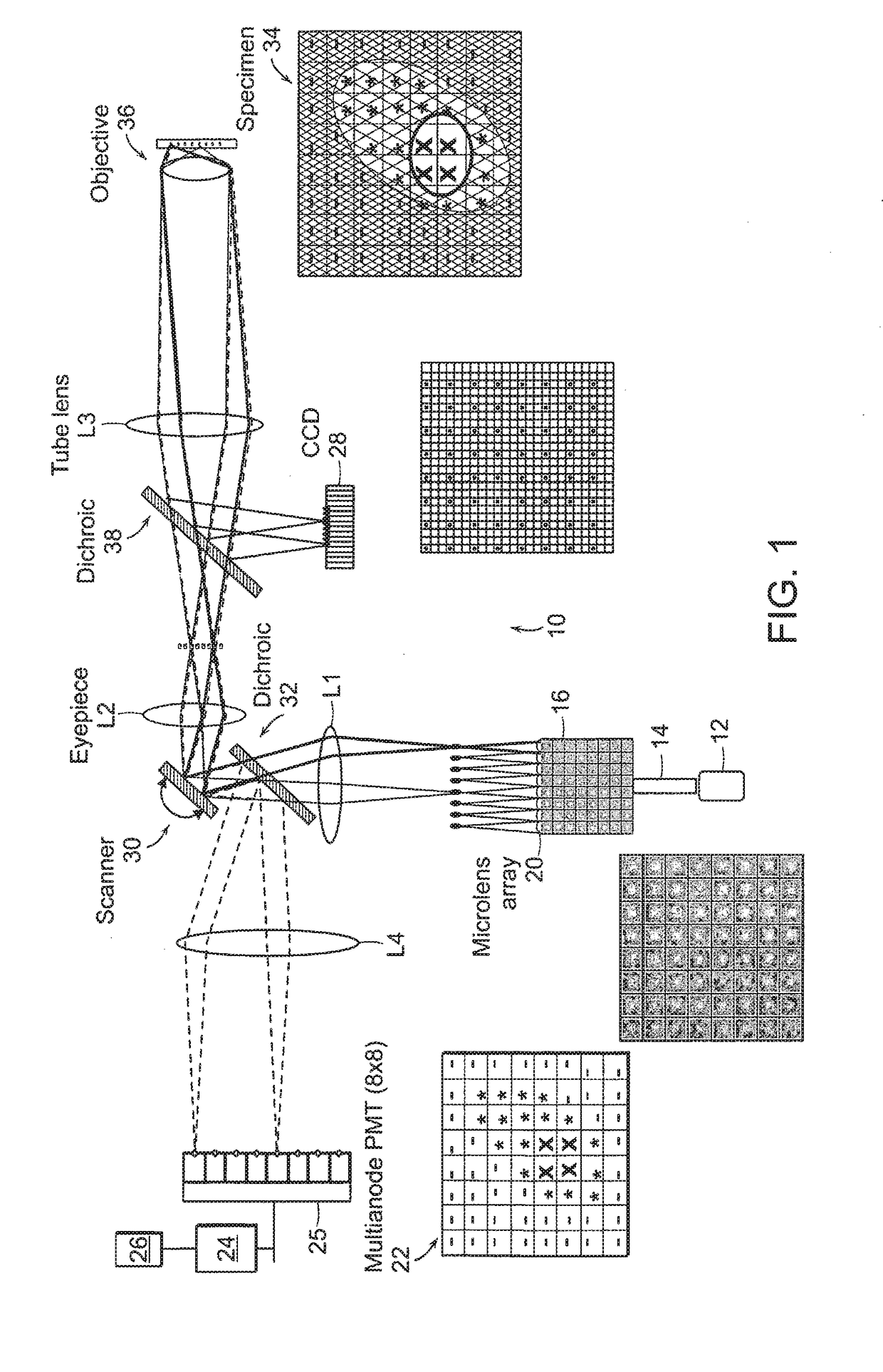Multifocal imaging systems and method
a multi-focal imaging and imaging system technology, applied in the field of multi-focal imaging systems and methods, can solve the problems of reducing the resolution of the resulting image, affecting the usefulness of tissue images, and cross-talk that can occur, so as to achieve fast imaging of the material
- Summary
- Abstract
- Description
- Claims
- Application Information
AI Technical Summary
Benefits of technology
Problems solved by technology
Method used
Image
Examples
case 1
[0163]The normalized signal distribution resembles the normalized power map squared and shows an intensity drop of 45% toward the corner PMTs in respect to the center PMTs. The laser power was attenuated to 75.3 mW in the sample and can reach a maximal value of approx. 645 mW, resembling a power of approx. 15 mW for the center foci in the sample. Measured intensity profile can be generated by imaging a homogeneously distributed fluorescent dye under a cover slip. The intensity measurement is not only mapped by the power / intensity distribution of the foci, but also by the sensitivity of the detector array. As a result it resembles the “true” measured intensity distribution. The image consists of 192×192 pixels and was generated by an array of 6×6 foci which were scanned across a uniform fluorescent dye sample. 2D xy image normalization is carried out in different ways:[0164] The normalized inverse of this intensity image (from a uniform fluorescent dye) is multiplied with the yx imag...
PUM
| Property | Measurement | Unit |
|---|---|---|
| volume | aaaaa | aaaaa |
| frequencies | aaaaa | aaaaa |
| depth | aaaaa | aaaaa |
Abstract
Description
Claims
Application Information
 Login to View More
Login to View More - R&D
- Intellectual Property
- Life Sciences
- Materials
- Tech Scout
- Unparalleled Data Quality
- Higher Quality Content
- 60% Fewer Hallucinations
Browse by: Latest US Patents, China's latest patents, Technical Efficacy Thesaurus, Application Domain, Technology Topic, Popular Technical Reports.
© 2025 PatSnap. All rights reserved.Legal|Privacy policy|Modern Slavery Act Transparency Statement|Sitemap|About US| Contact US: help@patsnap.com



